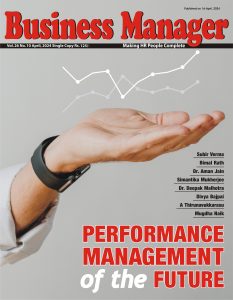There was a time in the 80s when the term workplace culture was relegated to the side-lines and deemed as an HR-specific soft concept. However, the world of work has changed significantly since then and workplace culture has now gotten its much-deserved place at the boardroom table. This is because organisations and HR leaders finally realise that workplace culture is a significant determinant of a company’s success or failure, and that culture must become a cornerstone of business practices across organisations.
Workplace Culture-What does it mean?
While there is no tangible definition, it is widely accepted that workplace culture is something that is more easily felt than measured. In essence, it is an unwritten and collective notion of how things are done in a certain organisation and isn’t really part of a company’s formal policies or value document. If we are to cater to a more millennial demographic, words such as ‘feeling’, ‘pulse’ or ‘vibe’ are most associated with workplace culture, and these are also the terms that best convey its meaning.
Also read: Dentsu appoints Unmesh Pawar as Chief People Officer – India & South Asia
A good and capable HR department should ideally have a handle on how employees are feeling and be on the frontlines of navigating and influencing a good workplace culture. Having said that, managing and transforming organisational culture is a challenging task. This is because workplace culture encompasses a whole host of overlapping aspects such as internal communications, company values, people’s attitudes and much more. Bringing about large-scale change with so many moving parts in play takes careful planning and strategy. And thus, below are the five best ways to successfully manage culture change in the workplace.
- Understanding the current culture: You cannot change something you don’t understand. Therefore, understanding a company’s current culture is the first step towards changing it. The first step is to know what are the existing behaviours that characterise the company, and which are the negative areas that need work. For example, employees may have access to a team with whom they can share their concerns regarding culture, however, very often, this team may not be doing a great job at conveying to the senior management what employees are truly feeling or, even worse, employees may be uncomfortable sharing their concerns with them due to fear of retaliation. Such problem areas need to be identified and addressed during this important first step.
- Ensure stakeholder and employee engagement: Cultural change in an organisation cannot happen in isolation, especially not without the participation of the very people it affects. Hence, teams across the organisation must have a say and be able to provide feedback during the process of cultural transformation. At the end of the day, people have an innate need to feel seen and heard. Hence, engaging employees and involving them in the process of cultural transformation is extremely important as it makes them feel that they are actively contributing to the structural changes of the future.
To attract and retain good talent in the future, companies are going to have to market themselves aggressively and workplace culture is poised to play a key role in this process.
- Constant Communication: Communication is always key to any kind of large-scale organisational change, and in the case of cultural transformation, it is even more important. Business leaders need to understand the power of words and actions and leverage it to their advantage. Whether it is continuously talking about your future vision for the company’s new culture or demonstrating it by becoming a role model, leaders must show constant commitment to the future and provide an image of what it will look like. For instance, if you want to foster bonding and better relationships within the company, use words and phrases such as family, oneness, support, and leaning in on each other – this will indicate to your employees the direction in which the company’s culture is headed.
- Change across the board: It is simply not enough to just talk about changing the workplace culture. Cultural change happens on many levels and must reflect in a company’s structure as well as policies. For example, if you want to create a more egalitarian culture, then this must be reflected through Diversity and Inclusion (D&I) initiatives while recruiting and managing talent. Or, if a company aims for a more relaxed atmosphere, then policies such as formal reporting of relationships should be relooked at. Similarly, to foster a culture of merit, HR and senior management need to rethink performance appraisal, reward, and compensation structures.
- Do not rush it: Change can never happen overnight. Cultural change can take anywhere from several months to a few years. Hence, being patient and working steadily towards driving organisational change through communication, policy and structural changes is the way to go.
Cultural change is crucial for companies today as it is known to drive up employee productivity and boost employee morale and satisfaction. When employees feel like they are a significant and essential part of the company’s success, they begin to see themselves in a different light. Eventually, cultural change will help employees to determine what their company stands for and what sets them apart from other organisations.
Furthermore, the world of work is constantly changing and there is a palpable shift in the balance of power, leading to employees gaining more negotiating power. Hence, to attract and retain good talent in the future, companies are going to have to market themselves aggressively and workplace culture is poised to play a key role in this process.
Stay connected with us on social media platform for instant update click here to join our LinkedIn, Twitter & Facebook




























Add comment